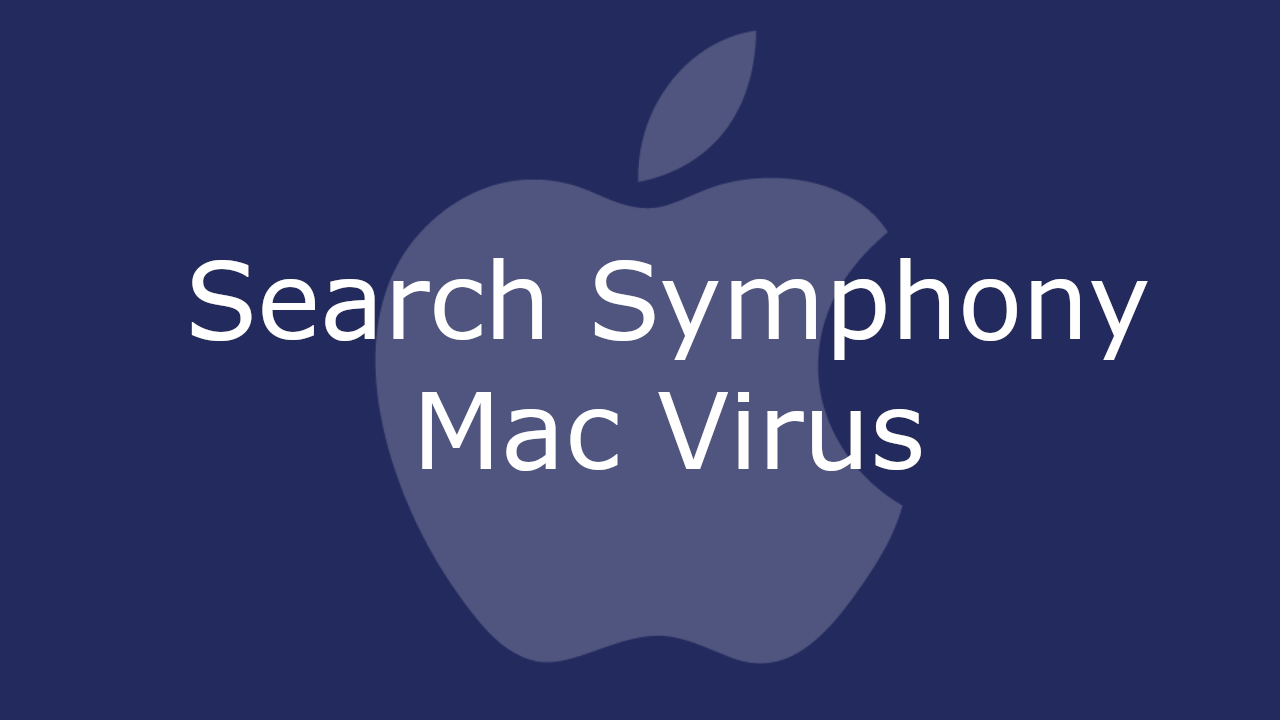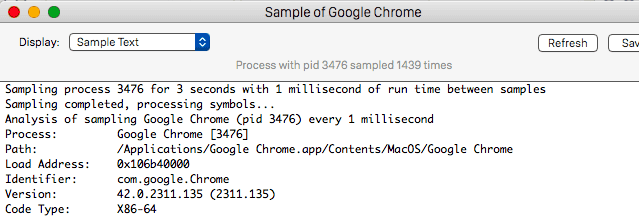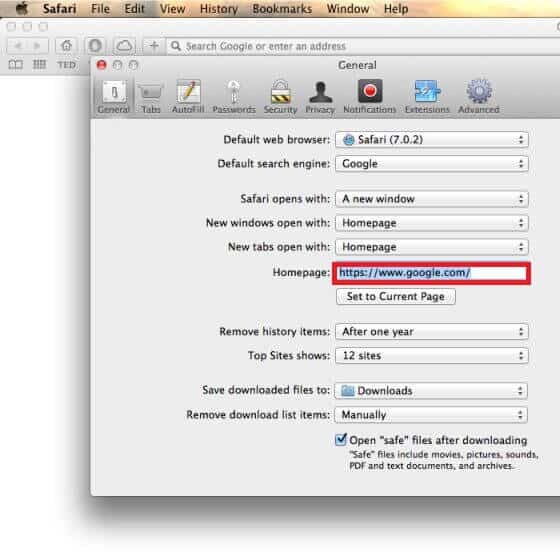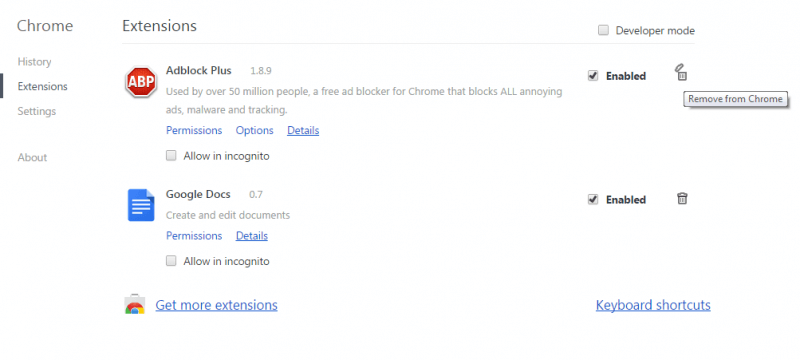Search Symphony
Search Symphony is an ad-spamming app that seeks to expose Mac users to aggressive site-promoting adverts. Search Symphony can be installed on Chrome, Safari, or Firefox and then alter the settings of the browser in order to further push its advertising campaigns and gain more ad clicks.

Obviously, the Pay-Per-View and Pay-Per-Click models play a major role in ensuring that unwanted applications such as Search Symphony, QSearch, Search Marquis make more and more money. In fact, those models are what defines and dictates the way a browser hijacker (the term used to refer to this type of apps) operates.
In their attempts to put even more ads and page redirects on your screen, many hijackers go as far as to change the settings of the affected browser, install new search engines, replace the homepage, and make various other unwelcome changes. In some cases, the changes a hijacker may make in your browser may potentially expose the whole computer to more harmful threats on the Internet, including dangerous Trojan horse viruses, spyware infections, and Ransomware.
Search Symphony for Safari
Search Symphony for Safari is a recently discovered browser hijacker version for Mac computers that can take over your main browser. Search Symphony for Safari is mainly used by its developers as a tool for promoting various sites that pay commissions to get advertised.
The typical way hijacker apps work is they get distributed alongside another program or app as an optional element added to them. Users are typically given the option to leave out the hijacker while installing the program it is attached to, but they rarely do so. This allows the hijacker to get installed automatically in the browser and to begin spamming it with its ads, site redirects, banners, pop-ups, and other forms of aggressive advertising materials.
Search Symphony 414 request-uri too large
Search Symphony 414 request-uri too large is a type of unwanted application that can make unwanted and unauthorized alterations in your Mac’s main browser. The changes Search Symphony 414 request-uri too large makes are aimed at turning your browser into a tool for ad generation and site promotion.
If this hijacker has entered your browser, you’re probably facing difficulties while trying to surf the Internet due to the constant generation of obstructive ads and page redirects. This activity will never stop if the hijacker stays in the browser, which is why it is suggested that you remove the unwanted app in order to prevent it from further obstructing your browsing experience. Furthermore, as we mentioned earlier, a hijacker may potentially open sites in your browser that are unsafe and, in some of the more severe instances, your computer may even get exposed to Ransomware, Spyware, or Trojans due to the uncontrolled advertising of the hijacker.
The SearchSymphony app
The SearchSymphony app is a browser-attacking program capable of turning your Mac’s main browser into an ad-generating platform. The SearchSymphony app should be removed ASAP or else its presence may lead to severe security issues, including the exposure of the computer to malware.
In order to help you remove this undesirable application from your Mac, we’ve prepared a helpful guide that will show you a possible way you could uninstall this browser hijacker.
SUMMARY:
| Name | Search Symphony |
| Type | Browser Hijacker |
| Detection Tool |
Remove Search Symphony Virus from Mac
Uninstall Search Symphony from Safari
Most Mac browser hijackers, such as Search Symphony, are able to control the behavior of your browser by installing a rogue extension that modifies its operation and settings. Detecting and removing that rouge extension in many cases could be all that is needed to save you from the browser hijacker. That’s why the first thing that you need to do if you notice Search Symphony on your Mac is to head to the hijacked browser and check its list of extensions for unwanted add-ons that are messing with your browsing activity. The quick instructions below will show you how to do that:
- As a start, open Safari, click on the Safari menu at the top and select Preferences.
- In Preferences, find the Extensions tab and click it.

- Next, search for extensions that could be linked to Search Symphony in the list.
- If you notice an extension that you believe has been installed by Search Symphony, remove it without hesitation.
- Lastly, check Safari for other questionable-looking or unwanted extensions and remove the ones that you don’t want to keep in the browser.
Unfortunately, sometimes, it may take additional actions to deal with apps like Search Symphony permanently. That’s why if the quick instructions above can’t rid you of the browser hijacker completely, please follow the detailed steps from this guide.
Step 1: Find the hijacker-related process and quit it
In some cases, you may need to first stop any hijacker-related processes in order to be able to remove Search Symphony from your Mac. This can be done when you open the Finder app from the main menu bar and navigate to Applications >>> Utilities and then Activity Monitor.
When all the processes that are running on your Mac are visible to you, search for processes that look unusual, have odd names or consume too much RAM and/or CPU. If a given process grabs your attention, or you think that it could be operated by Search Symphony, highlight it and then select the “i” button found at the top-left corner of the Activity Monitor window.

An information window will appear where you need to click on Sample. A sample file will be created for the selected process. Save that file on your Desktop.

After that, drop the sample file to the free online virus scanner below to scan it for malicious code:

If there’s malware in the file, delete it. Next, go back to the Activity Monitor, select the process you sampled and click on the X button next to the “i” button to quit that process.
If you find other suspicious processes, research them online to find out more about them. If they are linked to Search Symphony, apply the above instructions. If, however, the selected process is run by a legitimate program or by your OS, don’t make any changes and don’t quit it as this may affect the overall performance of your Mac OS.
Step 2: Remove the Browser Hijacker from the Applications folder
WARNING! READ CAREFULLY BEFORE PROCEEDING!
A common source of Mac browser hijackers and other unwanted software is low-quality free apps offered on third-party download platforms outside the official Apple App Store. So, if you have a hijacker like Search Symphony on your Mac, it is very likely that such a third-party app has been installed on the computer. To remove it, go to Finder and open Applications.
Next, carefully check the Applications folder for apps that have recently been installed. Pay special attention to entries that come from outside the Mac App Store and delete them (drag them to the Trash) if you can’t trust them.
Step 3: Launch Safari in a safe manner
In this step, you need to close Safari if it is open. Next, press and hold the Shift key from the keyboard and open the browser again. No sites that were opened during your previous browsing sessions should be loaded when Safari starts. If such sites or pages get loaded on their own, close Safari again and disconnect your Mac from the internet by either unplugging its internet cable (Ethernet) or switching off the Wi-Fi option from Mac’s main menu. After you do that, press and hold the Shift key and load the browser once more. This time it should launch safely without loading any pages linked to Search Symphony.
Step 4: Delete the hijacker’s settings from Safari
Once Safari has been safe-launched, click on the Safari Menu, select Preferences, and then click on the Extensions icon. Check for potentially unwanted extensions that seem to be linked to Search Symphony and delete them.
After that go back to Preferences and click on the General tab. 
If the URL for the browser’s homepage has been altered without your approval, delete it and set a homepage URL that you trust.

Back in Preferences open Privacy and click on Remove All Website Data. Confirm the action in order to delete temporary browser data such as website cookies and cached files that may contain information about Search Symphony.

The last thing that you need to open in Safari is the History menu. Click it and go to Clear History. Select All History and click on Clear Browsing History to delete any details about pages that have recently been loaded by Search Symphony.
Step 5: Check your other Mac browsers
If you want to remove Search Symphony permanently it is important to check all browsers on your Mac for browser hijacker changes and not only Safari. Below you will find instructions for that:
![]() Removing ads from Firefox for Mac:
Removing ads from Firefox for Mac:
Users with Firefox should open the browser and click on the main menu icon (three lines icon in the top-right). After that, they should select Add-ons >>> Extensions and delete any extensions that are potentially unwanted.

After that, you should delete any leftover data and refresh Firefox settings with the help of the additional instructions provided in the link.
![]() Removing ads from Chrome for Mac:
Removing ads from Chrome for Mac:
Chrome users should open it, click on the main menu icon (three dots at the top-right), select More Options, and go to Extensions. After that, they need to find and delete any extensions they don’t need or trust from the list by clicking on the Trash bin icon.

Then, they should click on the browser’s main menu icon again and select Settings >> Search Engine >> Manage Search Engines. If some new or questionable search engines have been enabled in Chrome, it is best to remove them from the browser. The goal is to be left with those search engines that can be trusted and block everything else that might be hijacking your search results.
Finally, follow the instructions for restoring the Google Chrome settings in case they have been modified by Search Symphony.
If Search Symphony is still bothering you after you have carefully completed the steps in this guide, the best thing we recommend you to do to remove it completely is to scan your Mac with the professional removal tool from this page (or another trusted removal tool of your choice) and follow its instructions. Sometimes browser hijackers tend to be persistent and may require the help of specialized software to be fully uninstalled from the system.
Search Symphony is an ad-supported browser add-on for Mac browsers that focuses on displaying paid ads on the users’ screens. Search Symphony is known for affecting popular browsers such as Safari, Chrome, and Firefox by changing their homepage and/or search engine and triggering page redirects.
Search Symphony cannot be categorized as an actual virus, even though many people refer to it as such because it doesn’t try to harm anything in the system. However, its promoting actions and the changes it may introduce to the affected browser make it potentially unwanted. For this reason, most researchers describe this software as a browser hijacker that operates on a Pay-Per-Click and Pay-Per-View basis, making money from user clicks to its ads and user visits to the sites that it promotes.
Browser hijackers like Search Symphony are typically distributed as built-in components that are integrated with other software, so it’s important to be careful about what you are installing on the computer. Another way you can land Search Symphony is if you accidentally downloaded it from a site that promotes it, by clicking on a disguised download/install button.
The Search Symphony virus isn’t regarded as highly dangerous, since it doesn’t aim to harm your Mac or your files. However, if the Search Symphony virus remains in the system, it may eventually put your Mac at risk of getting targeted by more serious threats.
The problem with browser hijackers like this one, in general, is that the content they typically promote is not particularly reliable and could sometimes be unsafe. If you have Search Symphony on your Mac, you will probably be getting bombarded with obstructive and aggressive online advertisements, and you may even experience automatic page redirects to some of the sites that this hijacker is trying to promote. While this activity is more annoying than dangerous, it could still land you on some unsafe site that may be designed to scam people or to get them infected with actual malware viruses (Trojans, Spyware, file-encrypting Ransomware, etc.). On top of all this, there’s not much that Search Symphony can offer you to make keeping this software on your Mac worth it. Considering all this, your best option truly is to delete this hijacker and restore the regular state of your browser/browsers.
To remove Search Symphony from Mac, you will need to first find its app and processes and eliminate them. Next, you must delete its files, and finally, to remove Search Symphony from your Mac, you will have to manually clean each browser on the computer.
Step 1 – Open Finder from the top, click Applications, open the Utilities folder, and double-click on the Activity Monitor. See if there are any suspiciously named processes with high CPU/memory/battery usage. Look up the names of any such processes and if they turn out to be related to Search Symphony, end them.
Step 2: Go to Finder > Applications and drag to the Trash any apps you see there that may be linked to the hijacker.
Step 3: Go to the following folders and delete from them any recent files or folders that may be from the hijacker:
/Library/LaunchAgents
/Library/LaunchDaemons
~/Library/LaunchAgents
~/Library/Application Support
Step 4: Open Safari, go to Safari menu > Preferences > Extensions, and remove the Search Symphony extension and any other rogue extensions that may be there. Then go to Preferences > Privacy, click Remove All Website Data and then click Remove Now.
Step 5: Delete any unwanted extensions from your other browsers.

Leave a Reply